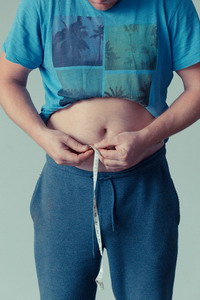 If you are reading this on Sunday, I will be finishing the third week of a detoxification fast. That sounds like it would be hard, but as I will show you in this newsletter, it is not difficult at all. But first, we have to understand the different kinds of fasting, what they are for, and how to do them.
If you are reading this on Sunday, I will be finishing the third week of a detoxification fast. That sounds like it would be hard, but as I will show you in this newsletter, it is not difficult at all. But first, we have to understand the different kinds of fasting, what they are for, and how to do them.
Fasting is the oldest treatment for improving health and chasing away diseases that humans have had. Even our own Benjamin Franklin said, “The best of all medicines is resting and
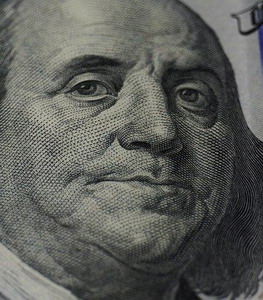
fasting.” Throughout history fasting has been a primary tool doctors have prescribed for all sorts of conditions and diseases. But what fasting looks like on a practical level has had little rigorous scientific research until recently. When I was in high school, I came across the first research paper on fasting that had been published in many years. It appeared in Scientific American, the one magazine I subscribed to in my teens other than comic books. It piqued my curiosity so much that when I moved to Davis to start my freshman year in college, I engaged in my first 2-week water fast. That was transformational. I discovered that food was optional, not a daily requirement. That was 50 years ago, and now over the last couple of years, interest in fasting has surged, and overnight the internet is full of fasting experts.
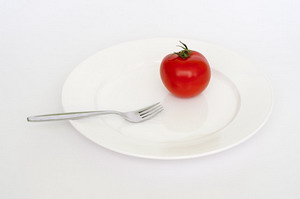 With the current explosion of interest in fasting, I would have to credit the longevity researcher Valter Longo down as USC. There has been a lot of research over the last 25 years on increasing longevity and improving health, and most of that research has ended up indicating that reducing daily calories has the best results. More recently an understanding of the body process called autophagy has come into view as a basic process for lengthening lifespan. The 2016 Nobel prize went to a Japanese scientist for uncovering this process. Running with this information, Dr. Longo started studying what conditions promoted autophagy and what conditions stopped it. Fasting is the biggest trigger, but other things also promote this state.
With the current explosion of interest in fasting, I would have to credit the longevity researcher Valter Longo down as USC. There has been a lot of research over the last 25 years on increasing longevity and improving health, and most of that research has ended up indicating that reducing daily calories has the best results. More recently an understanding of the body process called autophagy has come into view as a basic process for lengthening lifespan. The 2016 Nobel prize went to a Japanese scientist for uncovering this process. Running with this information, Dr. Longo started studying what conditions promoted autophagy and what conditions stopped it. Fasting is the biggest trigger, but other things also promote this state.
 What is autophagy? Autophagy is the process your body uses to recycle broken-down cells and cellular proteins. Through autophagy, you digest these components in tiny stomachs in the cells called lysosomes and proteosomes. Many of your white blood cells specialize in this process and go around swallowing whole damaged cells as well as bacteria and other junk. These are called phagocytes. Once these broken parts are reduced to basic amino acids, the body can use these to build new cells. Autophagy is always happening in a small amount in the body. That is why a bruise will go away. The damaged cells are eaten up and used to make new healthy tissue. Autophagy is the key to rejuvenation in the body. If you want to get younger, lose flabby skin, reduce wrinkles, rebuild muscles and organs, clean out your arteries, and so on, autophagy is the first step.
What is autophagy? Autophagy is the process your body uses to recycle broken-down cells and cellular proteins. Through autophagy, you digest these components in tiny stomachs in the cells called lysosomes and proteosomes. Many of your white blood cells specialize in this process and go around swallowing whole damaged cells as well as bacteria and other junk. These are called phagocytes. Once these broken parts are reduced to basic amino acids, the body can use these to build new cells. Autophagy is always happening in a small amount in the body. That is why a bruise will go away. The damaged cells are eaten up and used to make new healthy tissue. Autophagy is the key to rejuvenation in the body. If you want to get younger, lose flabby skin, reduce wrinkles, rebuild muscles and organs, clean out your arteries, and so on, autophagy is the first step.
 So this brings us to our first kind and purpose of fasting – rejuvenation of the body. What Dr. Longo discovered is that to induce autophagy you had to have several conditions going on in the body. First, insulin and blood sugar have to drop. Both of these shut of autophagy. This is why diabetics age faster than normal – the high insulin and blood sugar levels. That means you have to eat no sugars or carbohydrates (less than 20 grams). Second, the dietary levels of the amino acids leucine and isoleucine have to drop to zero. Since these are essential amino acids for the formation of proteins, this means you have to eat essentially no proteins. And third, your total calorie intake has to drop below 700 calories a day. If you think about this for a minute, not eating sugars, carbohydrates, or proteins, what is left? All that is left is fiber and a touch of fat. The simplest way to do this is to just live on water for a while.
So this brings us to our first kind and purpose of fasting – rejuvenation of the body. What Dr. Longo discovered is that to induce autophagy you had to have several conditions going on in the body. First, insulin and blood sugar have to drop. Both of these shut of autophagy. This is why diabetics age faster than normal – the high insulin and blood sugar levels. That means you have to eat no sugars or carbohydrates (less than 20 grams). Second, the dietary levels of the amino acids leucine and isoleucine have to drop to zero. Since these are essential amino acids for the formation of proteins, this means you have to eat essentially no proteins. And third, your total calorie intake has to drop below 700 calories a day. If you think about this for a minute, not eating sugars, carbohydrates, or proteins, what is left? All that is left is fiber and a touch of fat. The simplest way to do this is to just live on water for a while.
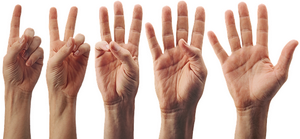 Now another key piece to the rejuvenation puzzle is that this autophagy protein recycling process is short-lived. It starts to increase after about 16 hours of fasting, peaks at around 3 to 4 days, then drops back down to normal at day 5. This is because after 5 days of fasting the body kicks into a protein-saving mode to keep you from losing muscle and organ tissue. So, rejuvenation fasts only last 5 days, after which you want to really boost your protein intake for several days while the body releases a huge load of stem cells and activates a bunch of growth hormones with which to rebuild your body. This rebuilding phase is the magic part of the rejuvenation fast. Fasting cleans up the mess and re-feeding rebuilds the body.
Now another key piece to the rejuvenation puzzle is that this autophagy protein recycling process is short-lived. It starts to increase after about 16 hours of fasting, peaks at around 3 to 4 days, then drops back down to normal at day 5. This is because after 5 days of fasting the body kicks into a protein-saving mode to keep you from losing muscle and organ tissue. So, rejuvenation fasts only last 5 days, after which you want to really boost your protein intake for several days while the body releases a huge load of stem cells and activates a bunch of growth hormones with which to rebuild your body. This rebuilding phase is the magic part of the rejuvenation fast. Fasting cleans up the mess and re-feeding rebuilds the body.
 Since consuming nothing but water scares most people, Dr. Longo created what he called a fast-mimicking diet. Basically, it involves eating high-fiber low-carb vegetables and a small amount of oil or fat for five days. This means eating vegetable soup, salad, and stir-fried/ steamed low-carb veggies. This diet hides the fact that your body acts like you are fasting while letting you continue to enjoy the experience of still eating. Since it only lasts for five days, it is no different than what women used to do to fit into that cute outfit for the upcoming event by eating just rabbit food for a few days. I have my mother doing this protocol once every month to help clean out her brain to help keep dementia at bay. In more serious cases I would recommend this protocol every two weeks. Start by getting off carbs for two days, then drop the proteins and calories for the next five. Re-feed for the next week with lots of high-quality proteins. Rinse and repeat. This is the quickest way to rebuild your body.
Since consuming nothing but water scares most people, Dr. Longo created what he called a fast-mimicking diet. Basically, it involves eating high-fiber low-carb vegetables and a small amount of oil or fat for five days. This means eating vegetable soup, salad, and stir-fried/ steamed low-carb veggies. This diet hides the fact that your body acts like you are fasting while letting you continue to enjoy the experience of still eating. Since it only lasts for five days, it is no different than what women used to do to fit into that cute outfit for the upcoming event by eating just rabbit food for a few days. I have my mother doing this protocol once every month to help clean out her brain to help keep dementia at bay. In more serious cases I would recommend this protocol every two weeks. Start by getting off carbs for two days, then drop the proteins and calories for the next five. Re-feed for the next week with lots of high-quality proteins. Rinse and repeat. This is the quickest way to rebuild your body.
 The other type of fasting I am looking at is detoxification fasting. Simple water fasting has been used traditionally for giving an inflamed digestive system a rest to settle things down. What happens when you fast is not only autophagy happening for the first five days, but your liver is switched into high gear to try to break down the poisons that have accumulated in your body. With fasting, your body starts to break down fat cells to release fat for energy. Fat cells are also where most of the poisons you accumulate end up being stored. As the fat releases, the poisons are thrown back into your bloodstream. Your liver grabs them and tries to break them down. As it does this, it excretes the broken down poisons into the small intestine through the bile ducts. This is all good, except that as this stuff sits in the intestines, bacteria can turn it back into available poisons and it will be reabsorbed into the body. To fully excrete the poison you need to have bulk fiber to grab the poison laden bile and carry it out in your feces. If you are water fasting, there is nothing to carry out the poison.
The other type of fasting I am looking at is detoxification fasting. Simple water fasting has been used traditionally for giving an inflamed digestive system a rest to settle things down. What happens when you fast is not only autophagy happening for the first five days, but your liver is switched into high gear to try to break down the poisons that have accumulated in your body. With fasting, your body starts to break down fat cells to release fat for energy. Fat cells are also where most of the poisons you accumulate end up being stored. As the fat releases, the poisons are thrown back into your bloodstream. Your liver grabs them and tries to break them down. As it does this, it excretes the broken down poisons into the small intestine through the bile ducts. This is all good, except that as this stuff sits in the intestines, bacteria can turn it back into available poisons and it will be reabsorbed into the body. To fully excrete the poison you need to have bulk fiber to grab the poison laden bile and carry it out in your feces. If you are water fasting, there is nothing to carry out the poison.
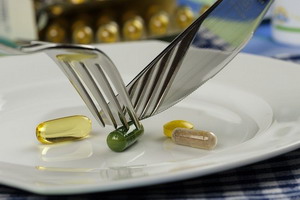 Detoxification fasting is therefore much like rejuvenation fasting using a fast mimicking diet except that it has a few bonus supplements to support the detox pathways and elimination. Which nutrients would be best for you depends on what toxins you have in your system, but in general, we want to support the formation of your body’s biggest detox molecule, glutathione. Betaine or TMG, folate, taurine, or even taking acetyl-glutathione itself is good. Also critical is taking a cholagogue, a substance that increases the flow of bile from the liver into the small intestine. Personally, I use beet leaf tablets, but fresh beet leaves or dandelion greens work well. Bitter foods usually help liver flushing. Lastly, you need stuff moving through the intestine/ colon that grabs the poisons. Fibers like zero-carb oat fiber, flax, cruciferous veggies, activated charcoal, and an assortment of others are all helpful. The key here is that you want to have at least one good healthy bowel movement every day. That is when you dump the poison.
Detoxification fasting is therefore much like rejuvenation fasting using a fast mimicking diet except that it has a few bonus supplements to support the detox pathways and elimination. Which nutrients would be best for you depends on what toxins you have in your system, but in general, we want to support the formation of your body’s biggest detox molecule, glutathione. Betaine or TMG, folate, taurine, or even taking acetyl-glutathione itself is good. Also critical is taking a cholagogue, a substance that increases the flow of bile from the liver into the small intestine. Personally, I use beet leaf tablets, but fresh beet leaves or dandelion greens work well. Bitter foods usually help liver flushing. Lastly, you need stuff moving through the intestine/ colon that grabs the poisons. Fibers like zero-carb oat fiber, flax, cruciferous veggies, activated charcoal, and an assortment of others are all helpful. The key here is that you want to have at least one good healthy bowel movement every day. That is when you dump the poison.
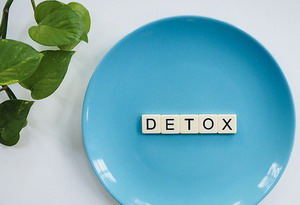 How long do you need to fast to stimulate detoxification? Detox actually starts about eight hours after your last meal, so you get a bit of detox just by doing intermittent fasting each day. A more vigorous approach would be to do alternate day fasting. This works quite well for weight loss as well. Deeper cleanings simply call for longer fasts. Dr. Jason Fung has found that three weeks of fasting is able to reverse type 2 diabetes about 80% of the time. Longer fasts have the added benefit of autophagy during the first five days. For this reason, it is important to spend the first several days after the fast re-feeding the body with good quality protein. You may need some hydrochloric acid and digestive enzymes when you first come off since your digestive system has been asleep for a while. Small quantities are also a must. I remember one two-week fast I did once long ago in which I came off the fast with a full-sized liverwurst and mustard sandwich. That was a bad choice. I suffered for a couple of days with that one.
How long do you need to fast to stimulate detoxification? Detox actually starts about eight hours after your last meal, so you get a bit of detox just by doing intermittent fasting each day. A more vigorous approach would be to do alternate day fasting. This works quite well for weight loss as well. Deeper cleanings simply call for longer fasts. Dr. Jason Fung has found that three weeks of fasting is able to reverse type 2 diabetes about 80% of the time. Longer fasts have the added benefit of autophagy during the first five days. For this reason, it is important to spend the first several days after the fast re-feeding the body with good quality protein. You may need some hydrochloric acid and digestive enzymes when you first come off since your digestive system has been asleep for a while. Small quantities are also a must. I remember one two-week fast I did once long ago in which I came off the fast with a full-sized liverwurst and mustard sandwich. That was a bad choice. I suffered for a couple of days with that one.
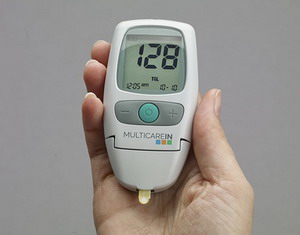 So why am I finishing up a three-week fast? I like to stay ahead of the boot with my health. A while back I did blood work that included a fasting insulin measurement. Mine came back at 12 units. Healthy is 4 to 5. Standard medicine thinks anything below 20 is normal, but their normal is based on a population of Americans that are not healthy. The number of Americans with metabolic syndrome is expected to reach 50% within a few years. Fasting insulin can predict pre-diabetes up to 20 years in advance. So I want to reverse that bad boy right now. Fasting is the way to do that. I had blood work done Thursday to see how I was doing, and my fasting insulin came back 9.5. Not perfect, but getting closer. With what has been happening the last two years, having that blood sugar healthy is about the best thing you can do to avoid trouble.
So why am I finishing up a three-week fast? I like to stay ahead of the boot with my health. A while back I did blood work that included a fasting insulin measurement. Mine came back at 12 units. Healthy is 4 to 5. Standard medicine thinks anything below 20 is normal, but their normal is based on a population of Americans that are not healthy. The number of Americans with metabolic syndrome is expected to reach 50% within a few years. Fasting insulin can predict pre-diabetes up to 20 years in advance. So I want to reverse that bad boy right now. Fasting is the way to do that. I had blood work done Thursday to see how I was doing, and my fasting insulin came back 9.5. Not perfect, but getting closer. With what has been happening the last two years, having that blood sugar healthy is about the best thing you can do to avoid trouble.
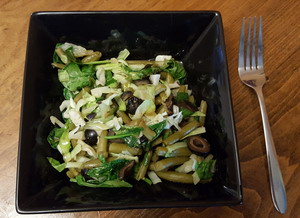 So fasting can be done fairly easily. Soups, salads, and stir-fries make it quite livable. My favorite go-to snack is jicama. It is sweet, crunchy, juicy, and delicious when you get them fresh. Older ones are kind of starchy. Fasting is just one more tool you have to take your health into your own hands.
So fasting can be done fairly easily. Soups, salads, and stir-fries make it quite livable. My favorite go-to snack is jicama. It is sweet, crunchy, juicy, and delicious when you get them fresh. Older ones are kind of starchy. Fasting is just one more tool you have to take your health into your own hands.
Take care,
David
